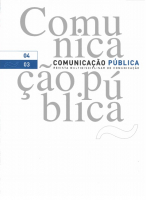Pressure, memorization and advertising effectiveness
beyond repetition: creativity as a potencial factor of effectiveness on the communication in advertising
DOI:
https://doi.org/10.4000/cp.8703Keywords:
advertising effectiveness, advertising cluttered context, frequency volume pressure, brand awareness and advertising recall, advertising creativityAbstract
In this paper we will discuss about the issue of advertising effectiveness on saturation media environment. Brand awareness and advertising recall are, at least, secondary goals for any advertising campaign. The supports of advertising effectiveness among the targets are their capacity of memorization as a consequence of advertising exposure. The actual quantitative models based on extensive databases used for media planners in their results estimative for focus on reach and frequency. These models are useful but not sufficient in order to gain a more complete understanding of real effectiveness of an ad among the target. It is possible to increase effectiveness through the use of creative strategies and messages without increase de “volume pressure”. In the cluttered media environment, saturated by information and commercial messages, increasing frequency probably does not result in more effectiveness. We believe that the answer is to valorise the power of creativity. More creativity is need in marketing and communication strategies, in advertising vehicles and even in the traditional mass media.
Downloads
References
APAN (ed.) (2006) Eficácia. A Publicidade que Funciona, Lisboa, APAN.
Bandura, A. (1994) Social Cognitive Theory of Mass Communication. In: Bryant J. e Zillmann D. (ed.) Media Effects. Advances in Theory and Research, New Jersey, Ed. LEA, pp. 61-90. DOI : 10.1207/S1532785XMEP0303_03 good / bad
Brennan, I. e Bahn, K. D. (2006) Literal versus Extended Symbolic Messages and Advertising Effectiveness: The Moderating Role of Need for Cognition. Revista Psychology & Marketing, Vol. 23(4) Abril, pp.273-295.
Cassirer, E. (1985) Filosofia das formas simbólicas I. A Linguagem, México, Fondo de Cultura Económica
Dutka, S. (1995) DAGMAR: Defining Advertising Goals for Measured Advertising Results, Nova Iorque, ANA/NTC Business Books
Gomes, A. S.(ed.) (1994) Publicidade e Comunicação, Lisboa, Texto Editora
Hague, P. e Jackson, P. (1996) Como Fazer Estudos de Mercado, Mem Martins, Ed. Cetop
Kent, R.(ed.) (1994) Measuring Media Audiences, Londres, Routledge
Léon, J. L. (1996) Los efectos de la publicidade, Barcelona, Ed Ariel Comunicación
Lindon D. et alli (2004) Mercator XXI. Teoria e Prática do Marketing, Lisboa, Dom Quixote
McDonald, C. (1995) Advertising Reach and Frequency, Chicago, ANA/NTC Business Books
Petty, R. E. e Priester, J. R. (1994) Mass Media Attitude Change: Implications of the Elaboration Likelihood Model of Persuasion. In: Bryant J. e Zillmann D. (ed.) Media Effects. Advances in Theory and Research, New Jersey, Ed. LEA, pp. 91-122.
Engel, J. F., Blackwell, R. D. e Miniard, P. W. (2000) Comportamento do Consumidor, Rio de Janeiro, LTC Editora
Ries, A. E Trout, J. (1986) Positioning: The Battle for Your Mind, Nova Iorque, McGraw-Hill
Rossiter, J.R. e Percy, L. (1988) Adverting and Promotion Management, Nova Iorque, McGraw-Hill
Stewart, D. W. e Ward, S. (1994) Media Effects on Advertising. In: Bryant J. e Zillmann D. (ed.) Media Effects. Advances in Theory and Research, Nova Jersey, Ed. LEA, pp. 315-387.
Taylor, J. W. (1993) How to Develop a Successful Advertising Plan, Chicago, NTC Business Books
Young, C. E. (2005) The Advertising ResearchHandbook, Seattle e Washington, Ed. Ideas in Flight
Downloads
Published
Issue
Section
License
Copyright (c) 2006 Direitos de Autor (c) 2006

This work is licensed under a Creative Commons Attribution-NonCommercial 4.0 International License.
Os conteúdos da Comunicação Pública estão licenciados com uma licença Creative Commons - Atribuição-NãoComercial 4.0 Internacional.


